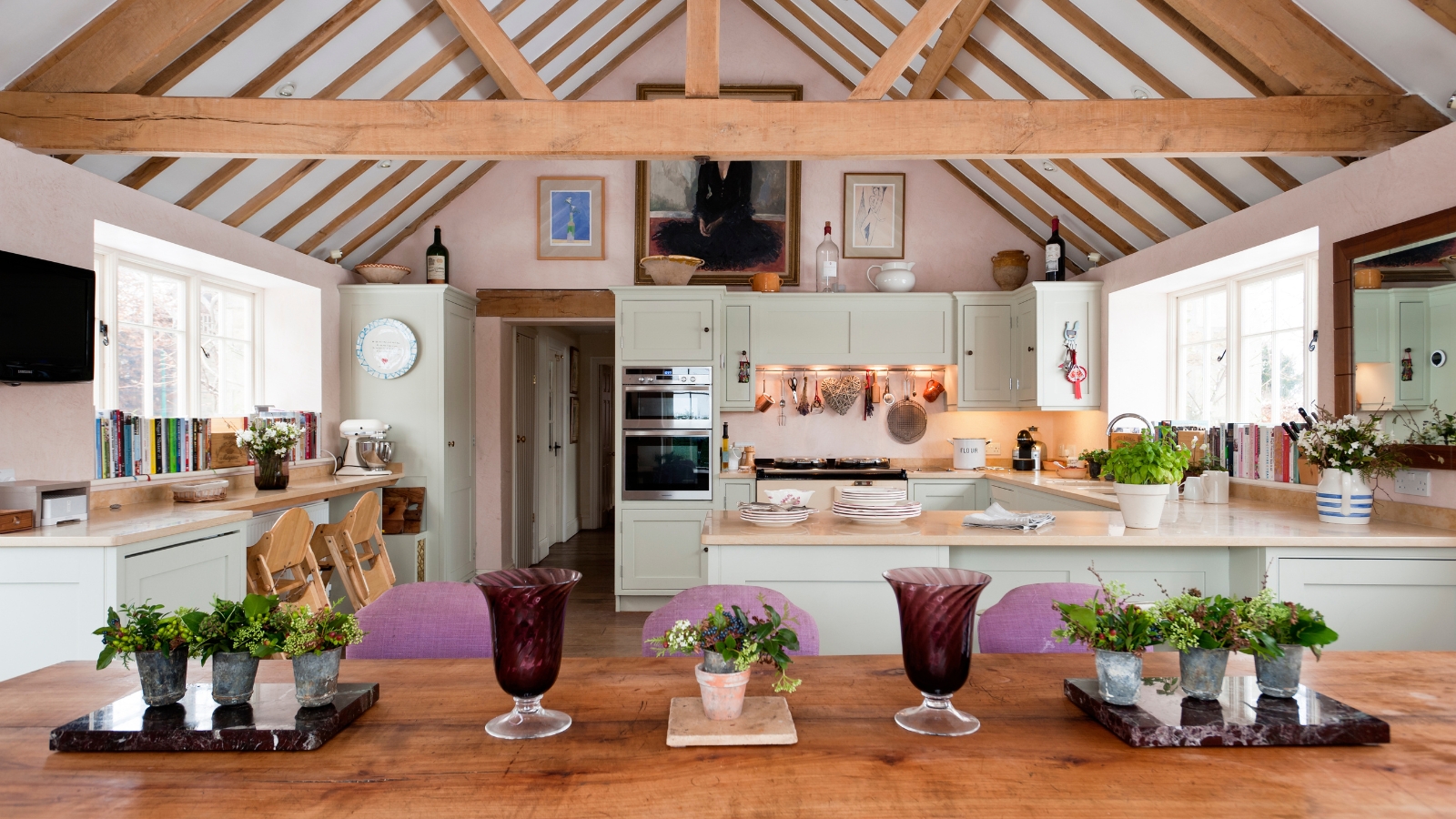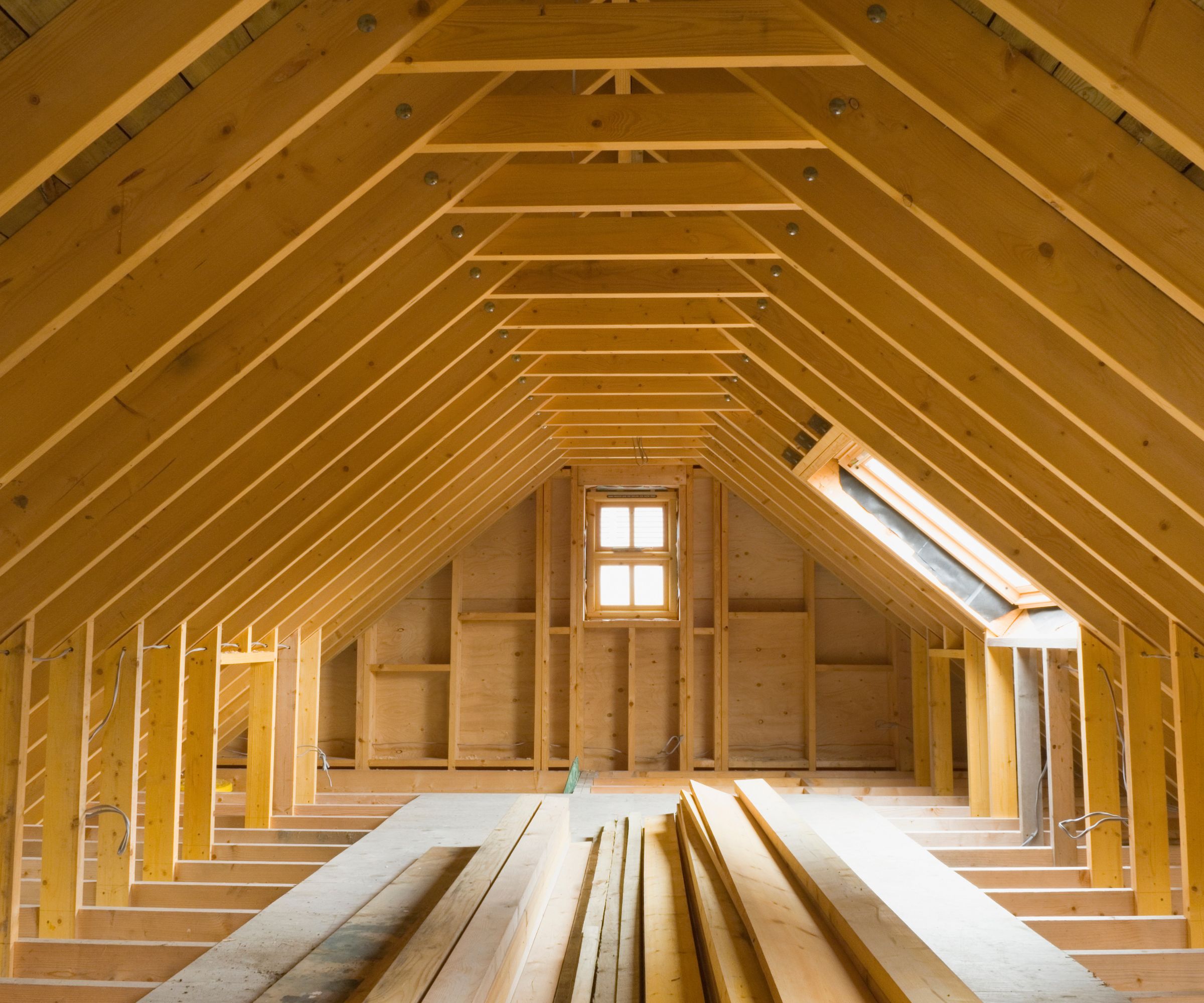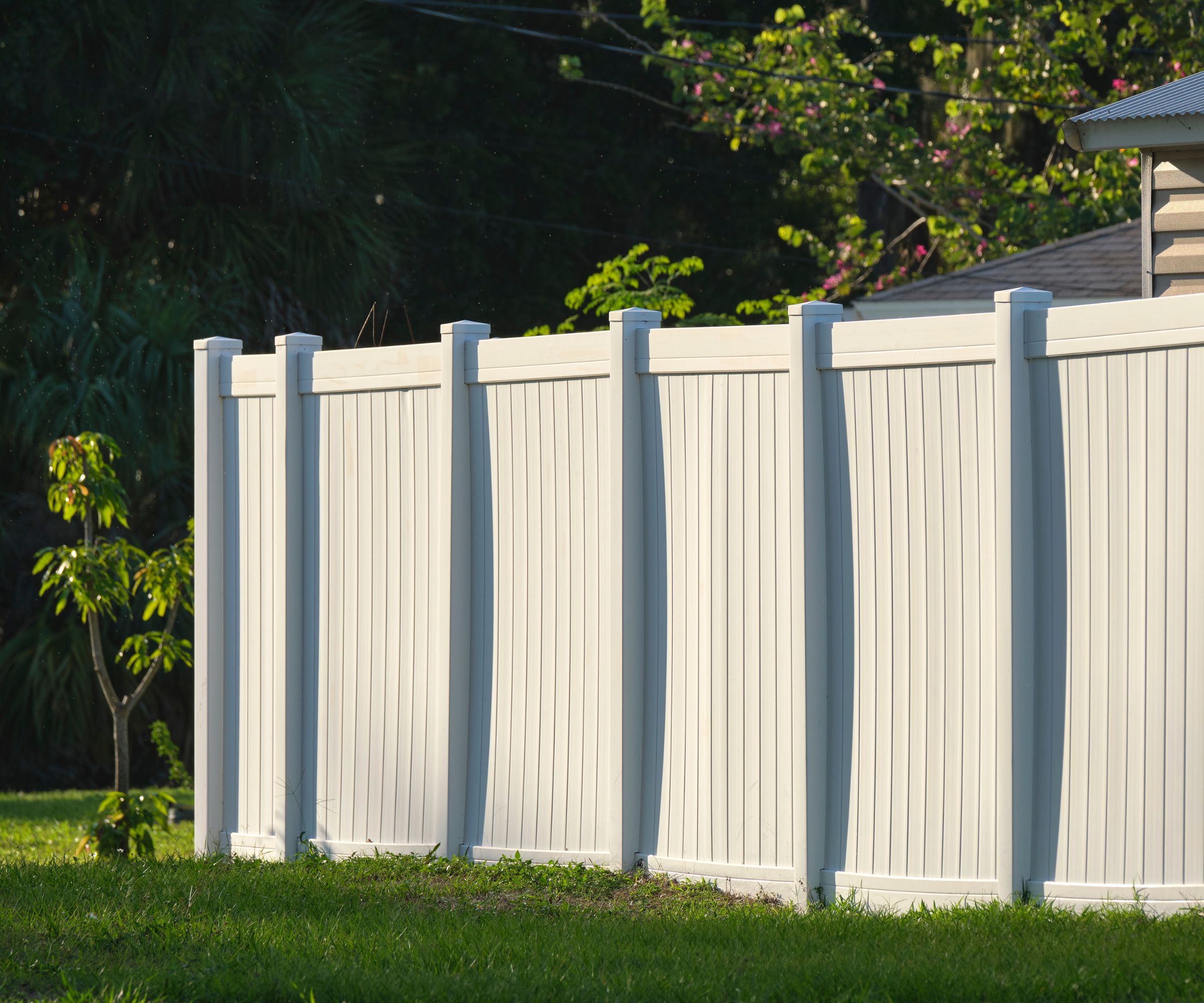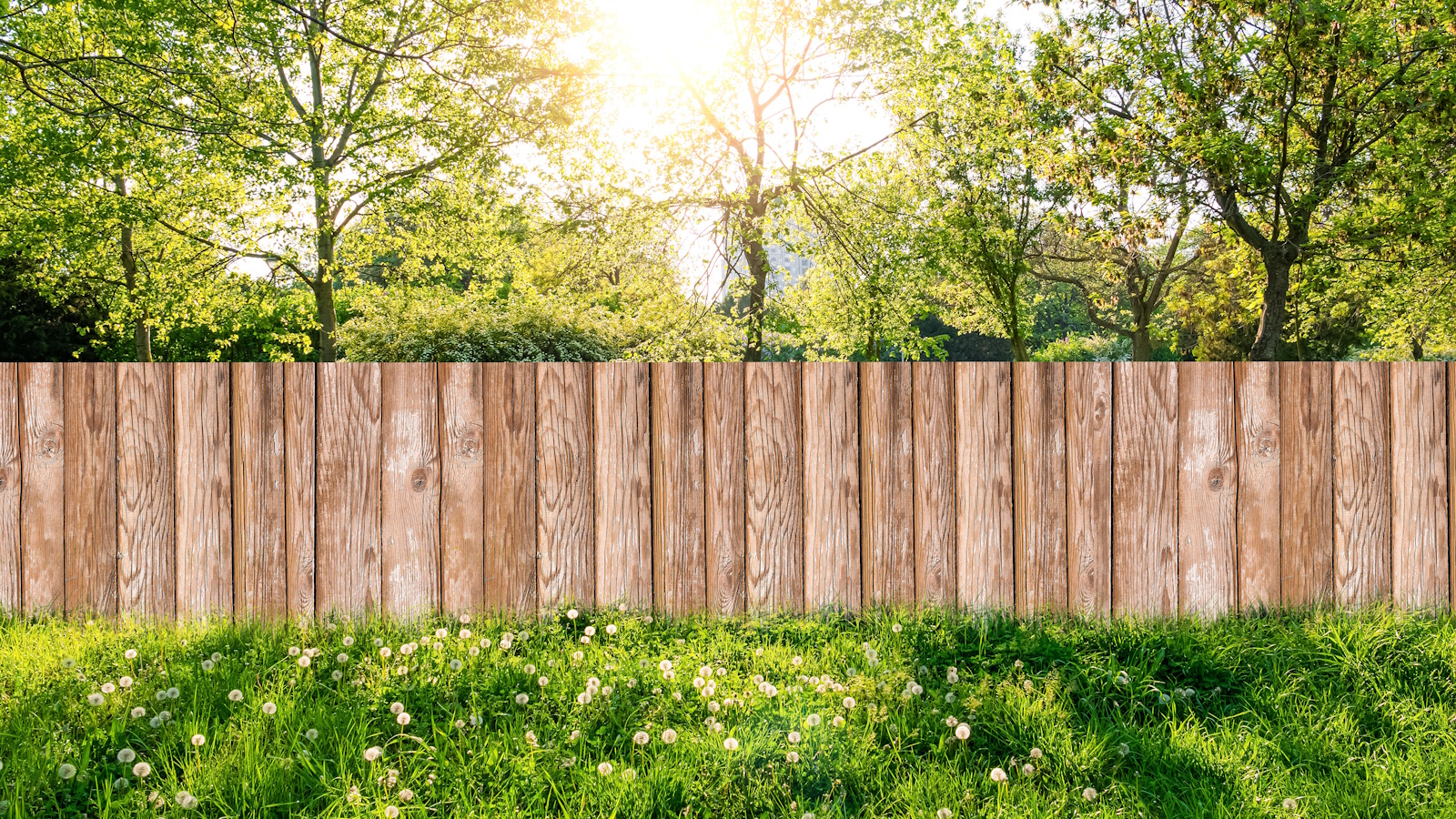6 places you might find wood rot in your home, what you should never ignore and what to do about it
Wave goodbye to wood rot with our expert guide

- 1. Roof joists and attic beams
- 2. Flooring and sub floors
- 3. Cabinet panels and interior walls
- 4. Decking and porch floors
- 5. Fencing and sheds
- 6. Exterior window frames and siding
- How to stop wood rot in the first place
- Can wood rot spread to other areas of the house?
- How can I prevent wood rot in outdoor structures?
- Can I repair wood rot myself or do I need a professional?

Caused by moisture-loving fungi, wood rot weakens wooden structures over time, leading to potentially expensive repairs if left unchecked. But how do you spot it?
In this guide, we’ll look at how to identify the signs of wood rot, where you’re most likely to find it indoors and outdoors, and how to prevent it.
One of the key signs its time to renovate your home, wood rot can quietly wreak both aesthetic and structural havoc if left untreated. So let's examine how to both spot and stop it.
Placed you might find signs of wood rot indoors
1. Roof joists and attic beams

Roof leaks or poor ventilation can cause moisture buildup in attics, leading to wood rot in beams and joists.
Mike Green, founder of Alternative Roofing, says, 'Keep an eye out for discoloration, especially dark patches or streaks on the wood. If you spot any fuzzy or mushroom-like growth, that's a clear sign. Use an ice pick or knife to gently probe suspicious areas. If the wood feels soft or spongy, you've likely got rot.'
The appropriate treatment will likely depend on the severity of the problem. Mike says, 'For minor cases, I recommend using a product like Abatron's LiquidWood – it's a two-part epoxy that penetrates and reinforces rotted wood.
'For more severe cases, you might need to replace the affected rafter entirely. How to know this for sure? When you have leaks, loose or completely missing shingles, or when an entire part of a roof is sagging.'
One common mistake to avoid is attempting to simply paint over the rot, or fill it with regular wood filler. Green adds, 'This won't solve the underlying issue and could lead to structural problems down the line, including leaks.'
For more useful tips on maintaining your attic, check out our guide on how to ventilate an attic, and why it's so important.
2. Flooring and sub floors

Bathrooms, kitchens, and basements are high-risk areas for wood rot in flooring, particularly near sinks, toilets, and bathtubs.
Francisco Romero, owner of Romero Hardwood Floors, says, 'As a hardwood flooring expert, I often see wood rot in floorboards and joists in basements and crawl spaces. Soft, spongy wood that caves in when pressed is a clear sign, as are stains, mold, and wood pulling away from nails. The only solution is to replace damaged boards completely. Sealing or painting over damage won’t fix the underlying issue.'
Mold in your plumbing can be due to leaks and cracks that are hidden away but those leaks can damage your flooring and sub floors.
3. Cabinet panels and interior walls

A well-maintained bathroom
Wood panels and cabinets in bathrooms and kitchens can develop rot due to water exposure and high humidity. You may notice peeling or flaking paint, soft areas, or cracking wood. Cabinet panels near plumbing fixtures are especially vulnerable, as leaks can feed the rot unnoticed for some time.
Karina Toner, operations manager at Spekless Cleaning, says, 'The most common signs I see are soft, crumbling wood around the base of cabinets, peeling or bubbling laminate or paint, dark stains around edges or joints, mold growth, or musty odors.
'Before addressing the rot, you want to begin by drying out any moisture sources. Next, remove damaged sections and use wood filler to repair smaller areas. Finally, refinish or repaint the cabinet after applying a wood sealant.'
Toner recommends Minwax High-Performance Wood Filler from Amazon. She adds, 'This durable filler can rebuild rotted areas in cabinets, providing a long-lasting solution.'
Places you might find signs of wood rot outdoors
4. Decking and porch floors

Decks and porches are exposed to the elements year-round, making them prone to wood rot.
Tommy Mello, founder of A1 Garage Door Service, advises inspecting decking closely. He says, 'Look out for signs such as soft, crumbly areas or discolored wood. Check for any spongy texture or signs of mold growth. Pay particular attention to the underside of the deck and areas around screws and nails.
'Replace severely affected boards and treat the remaining wood with a wood preservative like Thompson's WaterSeal Clear Wood Protector, available from Amazon. This product protects wood from moisture and decay.'
Toner adds, 'I would second this recommendation – this is a highly effective sealant that protects wood from water damage and helps prevent future rot.'
5. Fencing and sheds

Vinyl fences are resistant to rot
Outdoor structures such as fences and sheds are often affected by wood rot due to constant exposure to rain, humidity, and ground moisture. Cracks, warping, and brittle wood are common indicators. Left untreated, these structures can deteriorate quickly.
Tanner Hamby, director of operations at Stand Strong Fencing, brings more than 12 years of experience in the construction industry. He says, 'Keep an eye on the posts, rails, and panels. Each has its own set of issues, but the core problem is moisture. Knowing how to spot it early can save you a lot of headaches.
'Start with the posts. Rot tends to occur just above the ground level where moisture collects. You’ll want to check for soft or spongy spots, cracking, or dark discoloration – all signs the wood is breaking down. As for the rails – the trouble usually shows up as sagging, cracking, or peeling paint. The points where the rails meet the posts are particularly vulnerable.
'Finally, the panels: look for dark spots, warping, or any wood that feels soft to the touch. If the panels start pulling away from the structure, that’s a red flag for rot.'
To address wood rot, Hamby advises cutting off the moisture source, above all else. He says, 'Now, a lot of people think setting fence posts in concrete is a good idea – it’s not. Concrete traps moisture, which speeds up the rotting process.
'You’re better off using products like PostSaver Pro-Wrap & Tack from Amazon or Fence Armor Post Guards from Walmart to keep the moisture out and extend the life of your posts. These create a barrier that locks in preservatives and keeps out the water.
'For the rails and panels, it’s usually best to replace the rotten sections entirely. I’d recommend treated wood or – even better – composite materials, which are much more resistant to rot.'
For further tips, check out our dedicated guide for staining a fence and get it weather-ready.
6. Exterior window frames and siding
Peeling paint, soft spots, or dark patches on window frames or siding are clear signs of wood rot.
Don Schneider, brand president of Mighty Dog Roofing, specializes in roofing, sidings and windows. He says, 'When it comes to spotting wood rot on your windows, there are a few telltale signs. If the wood feels soft or spongy when you press on it – that’s a sign. Next, keep an eye out for cracking or splitting. These little gaps can let moisture in and create the perfect environment for rot to spread.
'You might also notice some discoloration – anything darker than the usual wood tone, or patches of black, brown, or yellow, often point to moisture damage. Oh, and if the paint around your windows is peeling – that’s another thing to check. Once the paint's gone, the wood underneath can be exposed to moisture, which accelerates rot.'
If you do find rot in your windows, Schneider advises calm. He says, 'Don’t panic – it’s fixable! The first thing you’ll want to do is grab a chisel and carefully scrape away the damaged, rotted wood. It’s really important to get rid of all the soft wood, as any rot you leave behind could continue to spread.
'After you’ve cleared it out, you’ll need to fill in those gaps. I recommend using Minwax Stainable Natural Wood Filler from Target – it’s tough and works well for exterior wood. Mix it with the hardener, and you’re good to go. Once the filler dries, give it a nice sand to smooth it out.'
Gorilla All-Purpose Wood Filler from Amazon is another popular and reliable option, which is shrink and crack resistant.
Schneider adds, 'Lastly, sealing is crucial. Use a caulk that works perfectly for those tricky gaps between the window frame and glass. You’ll then want to prime and paint the area, making sure the finish matches the rest of the window.'
GE Supreme Paintable Silicone Caulk, available from Amazon, is suitable for windows and 100% waterproof.
How to stop wood rot in the first place
The best way to avoid wood rot is by preventing moisture buildup in and around your home. Here are some essential tips:
- Ensure proper drainage: Gutters, downspouts, and drains should direct water away from your home. Clogged gutters can lead to water overflowing and soaking into wood structures like siding and window frames so clear your gutters regularly.
- Maintain good ventilation: Ensure adequate ventilation in humid areas like basements, bathrooms, and attics to prevent moisture from accumulating. Use fans and dehumidifiers when necessary. This TCL Smart Dehumidifier from Target offers precise humidity control and comes with great reviews.
- Seal and protect wood: Apply water-resistant coatings or sealants to outdoor wood surfaces, like decks and fences. Paint or stain wood regularly to provide a protective barrier against moisture. Mello says, 'For general prevention, consider using BEHR Premium Wood Stain & Sealer. This product provides excellent protection against moisture and UV damage, extending the life of your wood.' Schneider adds, 'Seal windows up tight by checking the caulking around them regularly and reapplying if you see any cracks. Use Dynaflex Ultra Advanced Exterior Sealant from Amazon – it’s flexible and durable.'
- Fix leaks immediately: Repair any plumbing or areas prone to roof leaks as soon as they’re detected. Even a small leak can introduce enough moisture to start rot.
- Use pressure-treated wood: For outdoor structures like fences, decks, and garden beds, use pressure-treated wood that resists decay and rot more effectively than untreated wood.
FAQs
Can wood rot spread to other areas of the house?
Yes, wood rot can spread to nearby wooden structures if the moisture source isn’t addressed. Eliminating moisture is key to stopping the spread.
How can I prevent wood rot in outdoor structures?
Regularly maintain and seal wood with water-resistant coatings, ensure proper drainage, and use pressure-treated wood for outdoor projects to prevent wood rot.
Can I repair wood rot myself or do I need a professional?
Minor wood rot can be repaired with fillers or hardeners. However, if the damage is extensive or structural, it's best to consult a professional to assess and repair the affected areas.
So there you have it — six signs of wood rot and what to do about it. Wood rot is a serious issue, but if caught early, can often be managed with minimal repairs.
Next, check out how to get your house ready for winter.
Sign up to the Homes & Gardens newsletter
Design expertise in your inbox – from inspiring decorating ideas and beautiful celebrity homes to practical gardening advice and shopping round-ups.

With more than a decade of experience writing news, lifestyle, consumer, and human interest articles for a wide range of national and international publications, Andy is a highly-qualified journalist writing features for the national press. From front porch to backyard, attic to basement, Andy has written about every area of the home. He specialises in bringing together the best industry expertise to answer all of your most pressing home and garden questions about seasonal and everyday cleaning, decluttering, organizing and DIY.
-
 Can my neighbor paint their side of my fence? Here's the legal regulations you need to know to avoid disputes, plus when to take action
Can my neighbor paint their side of my fence? Here's the legal regulations you need to know to avoid disputes, plus when to take actionThere's no simple answer to this question, so it's important to do your research before taking action
By Tenielle Jordison
-
 ‘It leads to more headaches than it's worth’ – 4 reasons you should never store things in your oven, including fire risks and serious illness
‘It leads to more headaches than it's worth’ – 4 reasons you should never store things in your oven, including fire risks and serious illnessYour oven is for cooking, and cooking only, experts urge
By Chiana Dickson